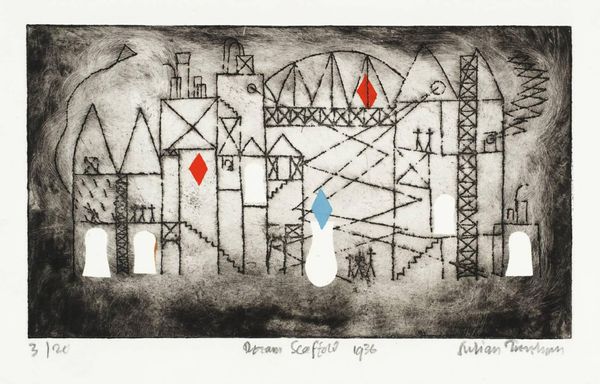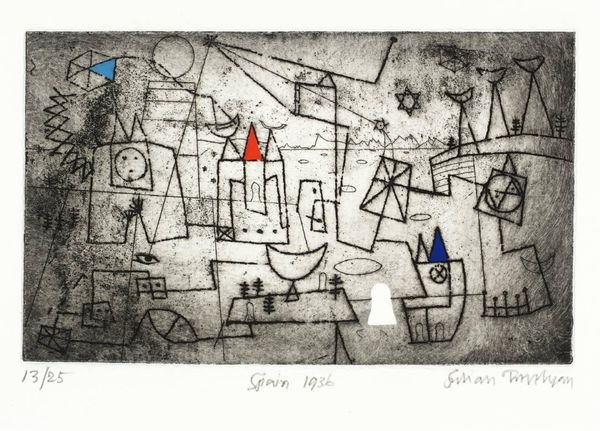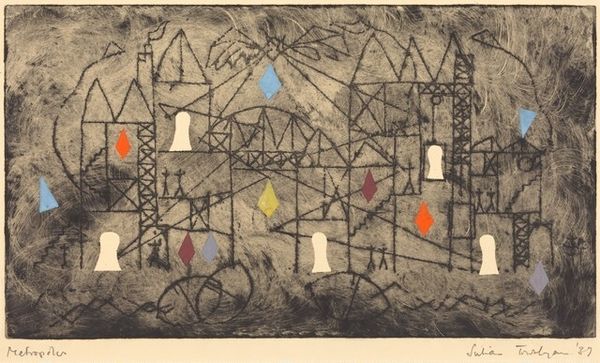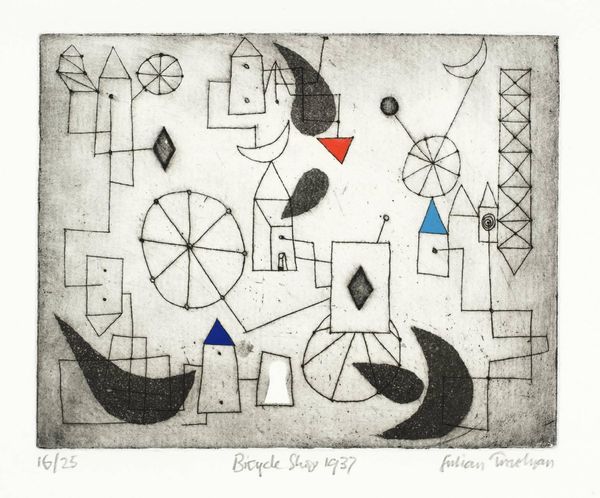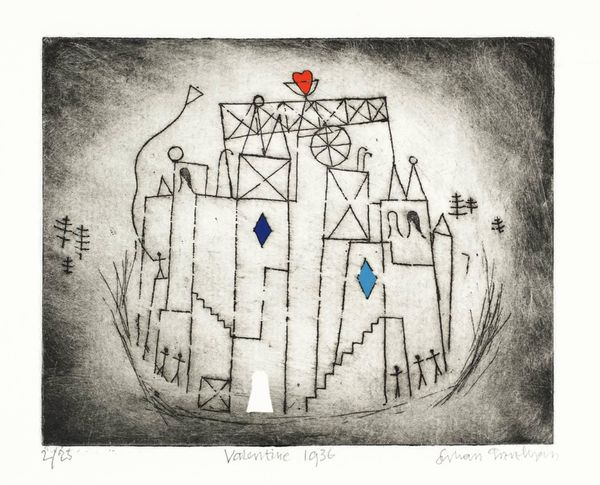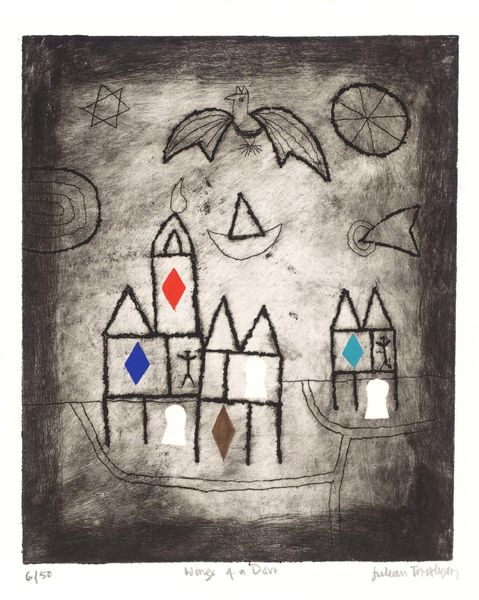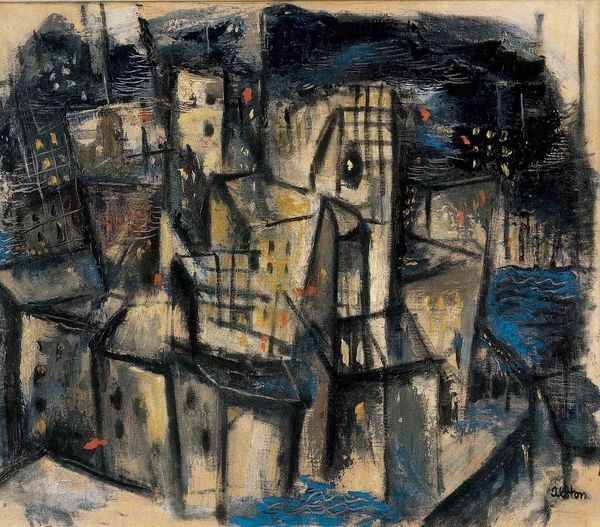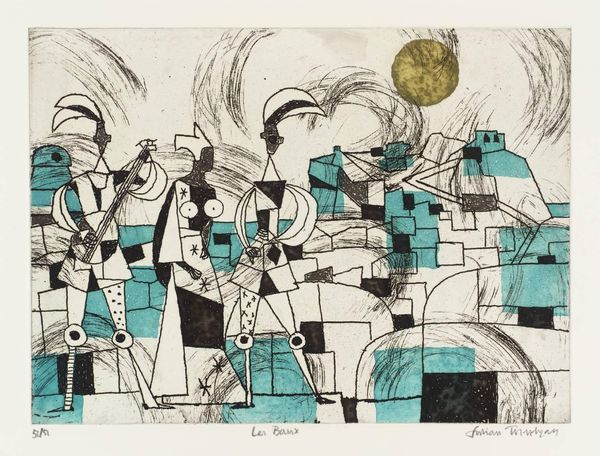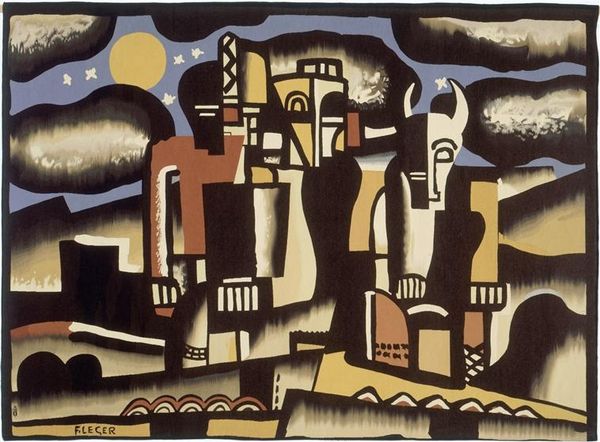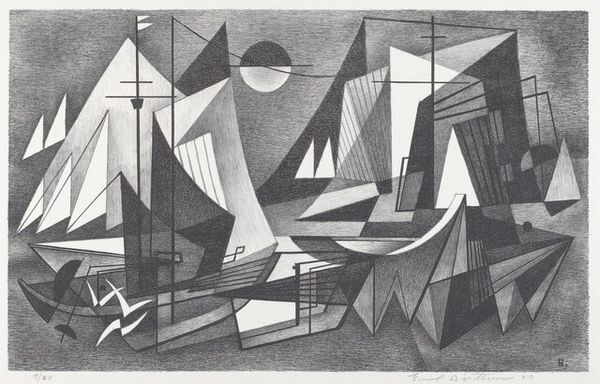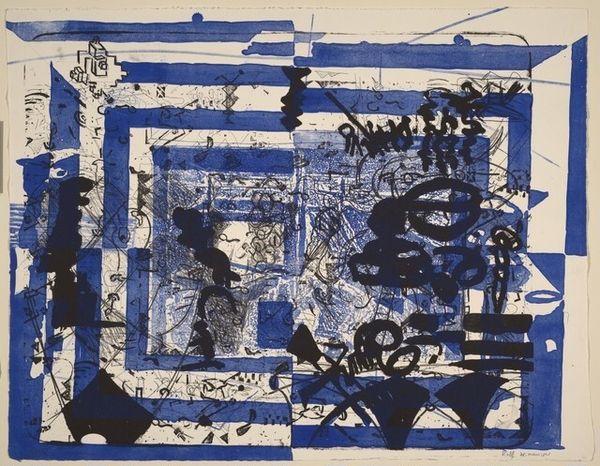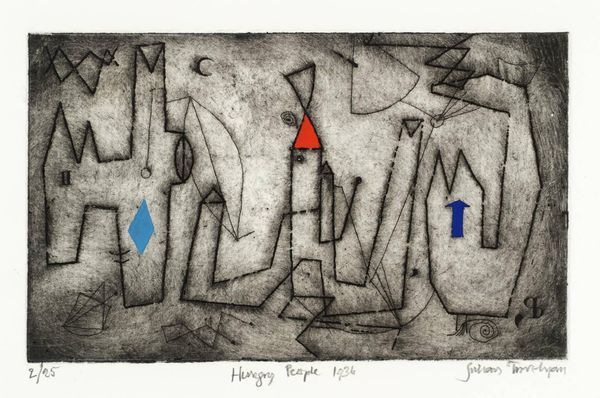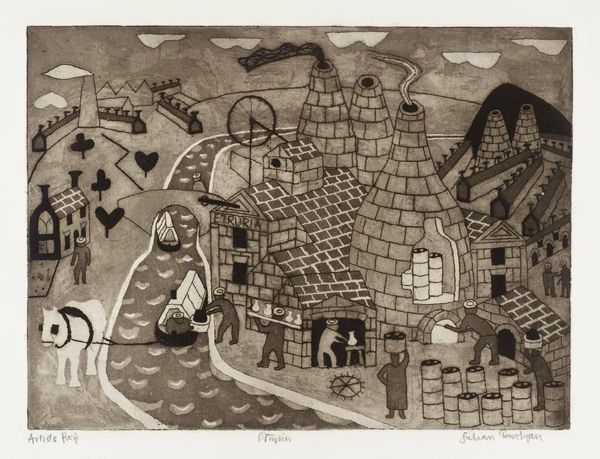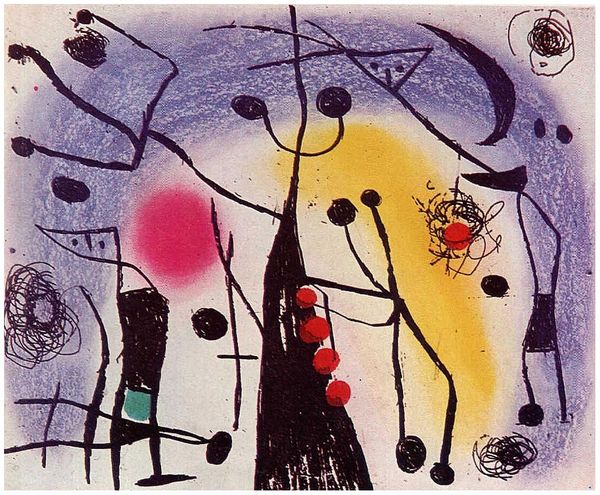
Dimensions: support: 178 x 254 mm
Copyright: © The estate of Julian Trevelyan | CC-BY-NC-ND 4.0 DEED, Photo: Tate
Curator: Julian Trevelyan's etching, Seaside, pulses with a surreal energy, doesn't it? The geometric houses cluster together, like a dreamscape condensed onto a small surface. Editor: It does—almost claustrophobic. The beach is this densely packed field of circles. There is a disquiet to it, perhaps reflecting the unease of 1936, the year it was made. Curator: Perhaps. Or maybe Trevelyan was just playing with how we perceive space. It's tiny, only 178 by 254 millimeters, but manages to convey a whole world. A world seen, perhaps, through a child's kaleidoscope. Editor: It's interesting that the colored diamonds feel almost like coded signals. The red, white and blue echoing a colonial presence, perhaps? Or at least a power dynamic imposed onto the landscape. Curator: I hadn't thought of that. For me, they feel more like little beacons of joy in an otherwise somber scene. It's all in how you look at it, isn't it? Editor: Indeed. I'm intrigued by how it makes us rethink familiar landscapes through the lens of socio-political awareness. Curator: And I love how it reminds us that even the simplest scene can contain a universe of possibilities.
